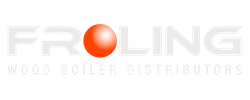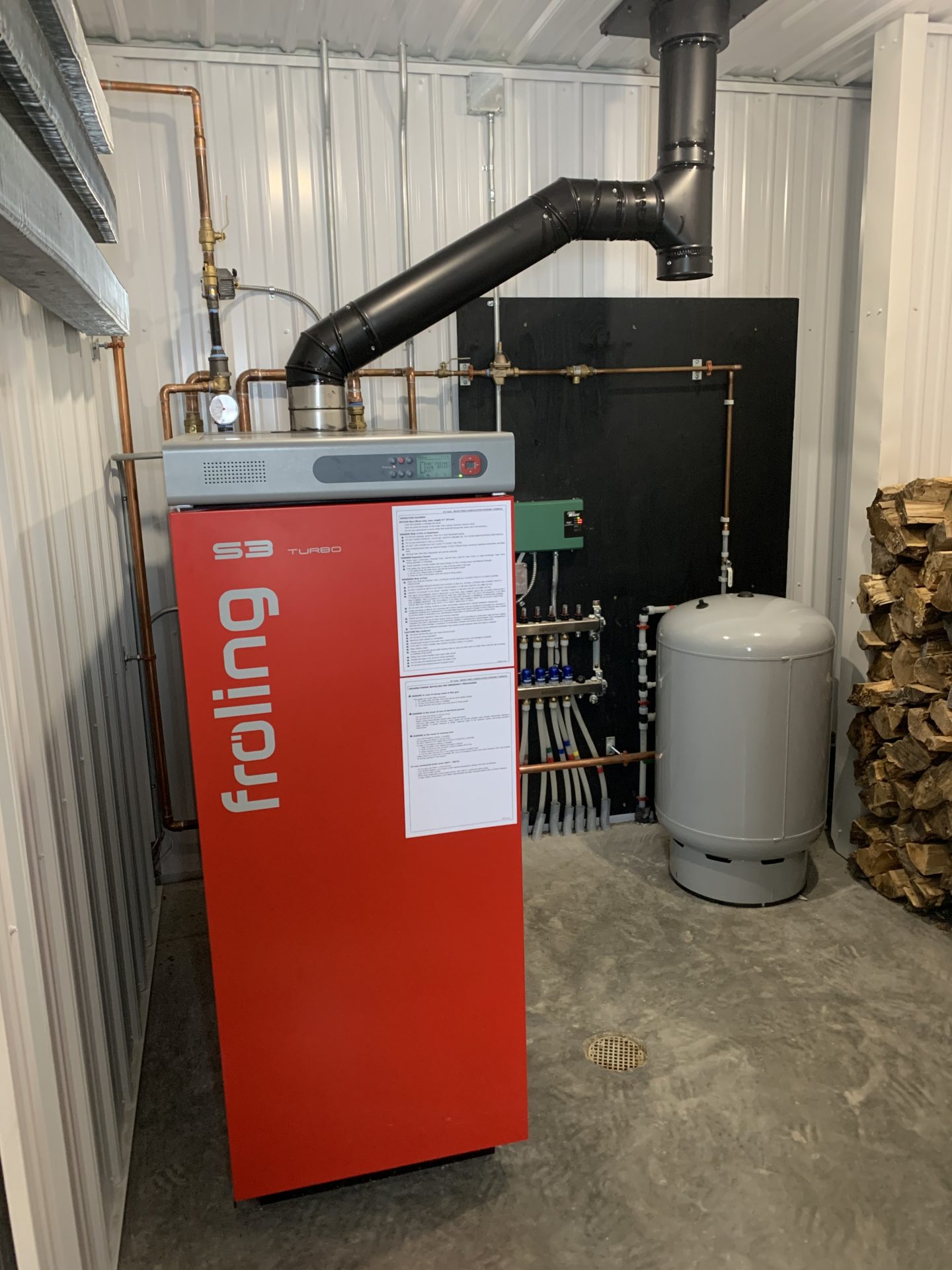
Along with mullet haircuts, outdoor boilers became mainstream in the 1990s. Due to their use of smoke signals and prominent positions in yards, outdoor woo d boilers (sadly) became the public face of the wood-burning industry.
Meanwhile, tens of thousands of indoor wood boilers are installed in homes around the country, but they generally go unnoticed, which in many ways is a good thing. Like grandma dotes after her grandkid who stays out of trouble, we are pleased that indoor wood boilers avoided notoriety for the wrong reasons.
What is an Outdoor Wood Boiler?

Pros and Cons of Outdoor Wood Boilers:
- Very large fireboxes designed for burning large pieces of wood.
- Cycle on and off based on demand, potentially leading to smoky burns.
- Large outdoor boilers often have issues with wood drying for good combustion.
- Smoke and debris are kept outside the house, but handling smoke during loading can be challenging.
What Is an Indoor Wood Boiler?
Indoor boilers, on the other hand, are carefully jacketed and insulated but are not weather-tight. They cannot be placed outside but can be located in remote buildings. Indoor boilers are compact compared to outdoor boilers and contain relatively small volumes of pressurized water, usually pure and untreated. Most indoor boilers, including those existing prior to EPA regulation, use two-stage combustion designs or wood gasification for efficiency.
Pros and Cons of Indoor Wood Boilers:
- Batch burning and smoke-free operation.
- Designed for stove-sized dry wood.
- Thermal storage enables hot and fast fires, requiring tending only every 12 - 24 hours.
- Practically smoke-free with smoke hoods that pull escaping smoke back into the boiler during loading.
Comparative Analysis: Labor, Time, Cleanliness, Safety, Cost, and Maintenance
Outdoor boilers and indoor boilers have different features, and there are defined pros and cons for each. Between access to wood, the potential for smoke, required time, safety, and cost, there are several reasons why an indoor boiler may be a better option.
Labor vs. Comfort
- Outdoor boilers reduce labor slightly but now require the operator to go outside to tend the fire in the cold. It's like going shopping and then putting the groceries in a pantry beside the driveway rather than bringing them indoors; you might as well put the refrigerator outdoors too.
- Indoor boilers allow wood to be brought inside, offering loading convenience in a comfortable environment. Some of our customers dawdle as they load their boilers, enjoy a beer, and enjoy the wonders of wood gasification.
Labor vs. Time
- Large fireboxes of outdoor boilers allow less processing of wood, but using large, un-split wood may result in poor combustion. When wood is kept beside the outdoor boiler in freezing temperatures, it sure isn't going to burn very well when first placed in the boiler. Even dry wood placed into an outdoor boiler firebox could contain 20% ice.
- EPA-approved indoor wood boilers use smaller, drier pieces of wood, yielding more heat with less wood.
Cleanliness and Smoke
- Outdoor boilers keep smoke and debris outside but may expose the operator to smoke during loading. Sure, the smoke isn't in the house, but it's in the operator's face and the neighbor's yard.
- Indoor boilers, especially those handled by Tarm Biomass, are practically smoke-free, with minimal mess.
Safety vs. Comfort
- Safety claims for outdoor boilers may not be justified, given potential hazards in mud or ice around the boiler.
- Indoor boilers, like our Fröling wood boilers, are safe, well-insulated, and produce little creosote, ensuring minimal risk.
Cost of Installation
- Outdoor boiler installations may require expensive trenching, buried pipes, and additional equipment for proper functioning. Many outdoor wood boiler owners learn the hard way.
- Indoor boilers are often less expensive to install, especially when space is available indoors, eliminating the need for trenching.
Maintenance
- Outdoor boilers require water maintenance, anti-freeze, and annual water testing for warranty validity.
- Indoor boilers, particularly Fröling wood boilers, require minimal water maintenance, with self-cleaning features and easy ash removal.
Choose an Wood Boiler From Tarm Biomass
The differences between outdoor and indoor boilers are clear. For simple operation, low maintenance, and the comforts of smoke-free, hassle-free, long-lasting warmth, Froling boilers from Tarm Biomass are the right choice.
At Tarm Biomass, we carry a range of wood burner solutions for your home or business. Explore our products today and contact us to learn more.



5 thoughts on “Outdoor Wood Boilers Vs. Indoor Wood Boilers”
I like what I read it
Can an indoor wood burner be vented directly outside?
Our current propane boiler & hot water heater are both directly vented outside. No existing chimney.
Also, can an indoor wood burner heat both the radiators and hot water?
Hello Rick,
Froling indoor wood boilers require a vertical, solid fuel chimney and cannot be direct vented. They can heat radiators, domestic water (tap water), radiant floor tubing, and even forced air via a heat exchanger.
What is the efficiency?? I have an outdoor boiler and burn 14 full cord a year. What can be expected with an indoor boiler
Hello Art,
The EPA rated efficiency of the S3 boilers is 77% for the S3 Turbo 30 and 73% for the S3 Turbo 50. EPA testing efficiency is dubious, as some highly efficient pellet boilers have low test results and some wood burners have efficiencies that will not be realized in the real world. Without knowing more about the size of your heating load, we cannot provide an estimate about the amount of wood you will burn. For a 3,000 square foot, well insulated (not super-insulated) home in Northern New Hampshire 5-6 cords of hardwood are typical for a heating year including domestic water heating.